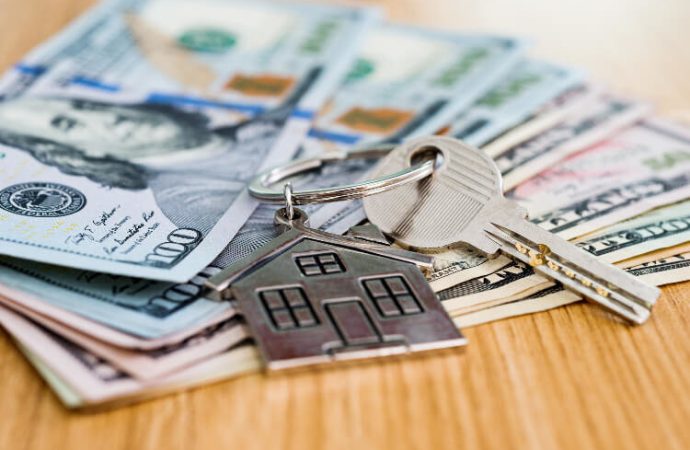The U.S. housing market has experienced significant shifts in recent years, influenced by various economic factors, with rising interest rates being one of the most impactful. Mortgage rates, which are closely tied to federal interest rates, have increased sharply, leading to notable changes in both housing demand and affordability. Understanding how rising interest rates affect
The U.S. housing market has experienced significant shifts in recent years, influenced by various economic factors, with rising interest rates being one of the most impactful. Mortgage rates, which are closely tied to federal interest rates, have increased sharply, leading to notable changes in both housing demand and affordability. Understanding how rising interest rates affect the housing market can help potential buyers, sellers, and investors make informed decisions in a rapidly evolving market landscape.
Understanding Interest Rates and Their Connection to the Housing Market
Interest rates are the percentage charges on borrowed money, typically set by the Federal Reserve, which adjusts these rates to influence the broader economy. When the Federal Reserve raises interest rates, borrowing becomes more expensive, affecting everything from credit cards to car loans, and most importantly for this discussion—mortgages. Higher mortgage rates make home loans costlier, reducing purchasing power for buyers and creating a ripple effect that impacts the entire housing market.
The Mechanics of Rising Interest Rates on Mortgage Costs
1. Increased Mortgage Payments:
With rising interest rates, the cost of a mortgage increases significantly. A higher interest rate means a higher monthly payment for the same loan amount. For instance, a 1% increase in mortgage rates on a $300,000 loan can increase monthly payments by hundreds of dollars. This shift can lead potential buyers to reconsider or delay their purchase plans.
2. Reduced Loan Approval Amounts:
When interest rates increase, lenders adjust the amount they are willing to lend based on a buyer’s income, leading to lower loan approvals. A buyer who qualified for a $400,000 home loan at a 3% interest rate might only qualify for a $300,000 loan at a 5% rate, as the higher interest eats into their affordability.
Impact on Housing Demand and Home Prices
1. Cooling Housing Demand:
As borrowing costs rise, fewer people are willing or able to buy homes, leading to a decrease in housing demand. Potential buyers are often priced out of the market or forced to look at more affordable options, which can result in a slower pace of sales and even price reductions in certain markets.
2. Stabilizing or Declining Home Prices:
Reduced demand usually translates to slower price growth or even a decline in prices in overheated markets. Sellers may need to reduce their asking prices or offer other incentives to attract buyers, leading to an overall stabilization or decline in home values, especially in markets that experienced rapid price increases during previous low-interest periods.
Effects on Homeowners and Real Estate Investors

Image by freepik.com
1. Decreased Refinancing Activity:
Many homeowners refinance their mortgages to take advantage of lower interest rates, but as rates rise, refinancing becomes less appealing. This trend has led to a significant decrease in refinancing applications, which also affects related industries like banking and mortgage services.
2. Changing Investor Strategies:
Real estate investors also feel the impact of rising rates. Higher borrowing costs mean that returns on investment properties, especially those with financed purchases, are reduced. Some investors may decide to sell off properties, while others could shift their focus to markets or types of investments that are less sensitive to interest rates.
Regional Variations in the Impact of Rising Interest Rates

This image is taken from google .com
1. Higher Impact in Expensive Markets:
Regions with high property prices, such as major urban centers, experience more significant effects from rising interest rates. In areas where home prices are already elevated, the increased cost of borrowing further reduces affordability, leading to a more pronounced cooling of the market.
2. Resilience in More Affordable Markets:
Conversely, markets with lower average home prices may experience less impact from rising rates. In these regions, homes remain relatively affordable, even with slightly higher rates, making them more attractive to both buyers and investors looking for better value.
Analysis Table: Key Effects of Rising Interest Rates on the U.S. Housing Market
| Factor | Impact | Explanation |
|---|---|---|
| Mortgage Costs | Increased | Higher interest rates increase monthly mortgage payments, making homes less affordable. |
| Buyer Demand | Decreased | Rising rates discourage buyers, reducing demand and slowing the housing market. |
| Home Prices | Stabilizing/Declining | Reduced demand can stabilize or slightly reduce prices, especially in previously high-growth areas. |
| Refinancing Activity | Significantly Decreased | Fewer homeowners are refinancing due to higher rates, impacting mortgage-related services. |
| Investor Activity | Shifting Investment Strategies | Investors face higher costs, leading some to adjust strategies or shift focus to more stable areas. |
| Regional Impact | Varies by Market | Expensive markets see greater impacts, while affordable areas are less affected. |
Comparative Table: Housing Market with Low vs. High Interest Rates
| Aspect | Low Interest Rate Environment | High Interest Rate Environment |
|---|---|---|
| Buyer Affordability | Higher affordability due to low borrowing costs | Lower affordability due to high borrowing costs |
| Mortgage Payment Size | Smaller payments | Larger payments |
| Buyer Demand | High, driving more buyers into the market | Low, discouraging potential buyers |
| Home Price Growth | Rapid growth due to strong demand | Slower growth, possible price corrections |
| Refinancing Activity | High, as homeowners seek lower rates | Low, less incentive for refinancing |
| Real Estate Investment | Higher returns due to low costs | Reduced returns, leading to strategy shifts |
Long-Term Implications of Rising Interest Rates on the U.S. Housing Market
1. Potential for Market Stabilization:
The U.S. housing market may experience stabilization in terms of prices and demand. High demand coupled with low inventory led to a rapid surge in home prices over the last decade. Rising interest rates may help curb this growth, creating a more balanced market in the long term.
2. Increased Rental Demand:
Higher mortgage rates can push would-be buyers into the rental market, increasing demand for rental properties. This shift can lead to higher rental prices, benefitting landlords and investors focused on rental properties.
3. Shift Toward More Affordable Housing Options:
With reduced borrowing capacity, potential buyers may look for more affordable homes or condos, increasing demand for entry-level properties. This shift can lead to more attention on affordable housing initiatives and smaller, more cost-effective home developments.
Shifts in New Home Construction
Rising interest rates don’t just impact buyers and homeowners—they also influence the construction industry. As the cost of borrowing increases, it becomes more expensive for developers to finance new housing projects. This factor can lead to a slowdown in new home construction, especially in high-cost housing markets. Homebuilders may delay or downsize projects, reducing the overall housing supply. This reduction in supply could further limit housing availability in certain regions, intensifying competition among buyers and placing upward pressure on home prices, despite reduced demand.
Impact on First-Time Homebuyers
First-time homebuyers are particularly vulnerable to rising interest rates, as they often have tighter budgets and fewer assets compared to repeat buyers. For many first-time buyers, higher mortgage rates mean either settling for smaller or older homes or postponing their purchase altogether. This barrier to entry is especially pronounced in competitive housing markets, where prices have already seen rapid growth in recent years. As a result, rising rates can widen the homeownership gap, as fewer young buyers or individuals with limited means can afford to enter the market under these conditions.
Influence on Long-Term Market Expectations
The current trend of rising interest rates is likely to influence how buyers and investors view the housing market in the long term. Traditionally, U.S. homeownership has been seen as a sound investment, with property values appreciating steadily over time. However, the potential for sustained high rates may lead to a shift in this perception, with some buyers opting to wait or invest in alternative assets. Investors, too, may look for shorter-term or more liquid investments that aren’t as affected by long-term borrowing costs. This change in outlook could reduce speculative buying in the housing market, potentially leading to more sustainable growth.
Adjustments in Mortgage Products and Terms
As interest rates rise, mortgage lenders may respond by offering more diverse loan products to attract buyers. Adjustable-rate mortgages (ARMs), which typically have lower initial rates than fixed-rate loans, often become more popular when interest rates increase. While these loans offer temporary relief from high monthly payments, they also carry the risk of rate hikes in the future, which can surprise buyers with increased payments. Some lenders may also introduce longer loan terms, such as 40-year mortgages, to help buyers keep monthly costs manageable. While these products provide alternatives for buyers, they can also complicate the financial landscape and require careful consideration.
Conclusion
The rising interest rate environment has made a noticeable impact on the U.S. housing market, affecting everything from mortgage costs to home prices and buyer demand. While these changes may create challenges for some buyers and investors, they also offer potential benefits, such as market stabilization and the opportunity for buyers to find value in less expensive markets. For those in the housing market, staying informed and adaptable is key to navigating the effects of rising interest rates.
















